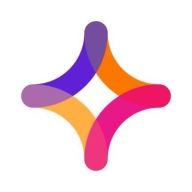![AWS Data Pipeline [EOL] Logo](https://images.peerspot.com/image/upload/c_scale,dpr_3.0,f_auto,q_100,w_64/ecwtjjlwilx2g4qujp0d5nz7cwsn.jpg?_a=BACAGSDL)

Jitterbit Harmony and AWS Data Pipeline EOL are competing products in the field of data integration and automation. Jitterbit Harmony seems to have the upper hand due to higher user satisfaction in pricing and customer support despite AWS Data Pipeline EOL's unique features.
Features: Jitterbit Harmony offers seamless integration for ERP, CRM, and cloud applications along with intuitive design and transformation capabilities. AWS Data Pipeline EOL provides robust data-driven workflows, strong integration with AWS services, and flexibility for complex data processing tasks, though it is transitioning away.
Ease of Deployment and Customer Service: Jitterbit Harmony is recognized for its straightforward deployment and excellent customer service, ensuring quick go-live processes with minimal complications. AWS Data Pipeline EOL, while requiring expert configuration, offers strong support within the AWS ecosystem during deployment.
Pricing and ROI: Jitterbit Harmony's transparent pricing models contribute to strong ROI through swift deployment and reduced operational costs. AWS Data Pipeline EOL might involve unforeseen pricing elements but presents high ROI opportunities through advanced AWS service utilization and enhanced data processing if effectively managed.

| Company Size | Count |
|---|---|
| Small Business | 8 |
| Midsize Enterprise | 3 |
| Large Enterprise | 1 |
AWS Data Pipeline is a web service that helps you reliably process and move data between different AWS compute and storage services, as well as on-premises data sources, at specified intervals. ... AWS Data Pipeline also allows you to move and process data that was previously locked up in on-premises data silos.
Jitterbit Harmony offers an advanced integration platform that simplifies data transformation, helps users quickly connect apps, and automates workflows, streamlining complex business processes efficiently.
Designed to meet the high demands of modern businesses, Jitterbit Harmony enables seamless integration across cloud and on-premise environments. By leveraging its powerful tools and user-friendly design, users can accelerate innovation, reduce operational costs, and enhance productivity. It bridges the gap between traditional and emerging technologies, ensuring organizations can adapt quickly to market changes and remain competitive.
What are the key features of Jitterbit Harmony?Jitterbit Harmony finds its application across numerous industries, from enhancing data integration in the healthcare sector to optimizing supply chain logistics in manufacturing. It supports financial institutions by improving transaction processing and facilitates real-time data connectivity in retail environments, making it a versatile choice for diverse industries looking to innovate rapidly.
We monitor all Cloud Data Integration reviews to prevent fraudulent reviews and keep review quality high. We do not post reviews by company employees or direct competitors. We validate each review for authenticity via cross-reference with LinkedIn, and personal follow-up with the reviewer when necessary.